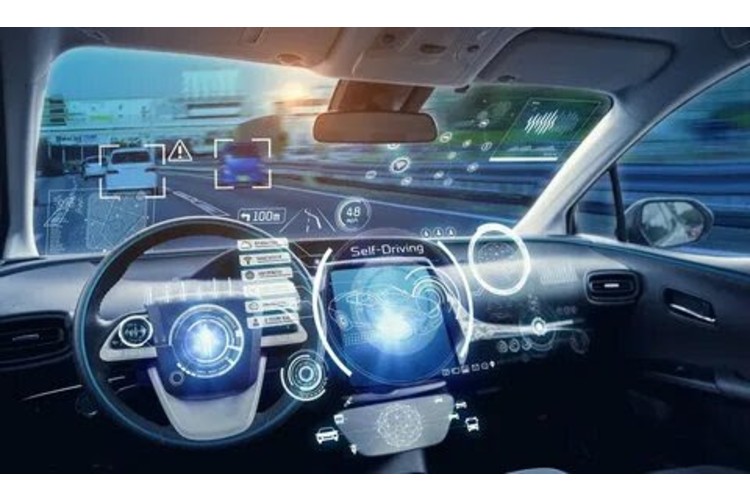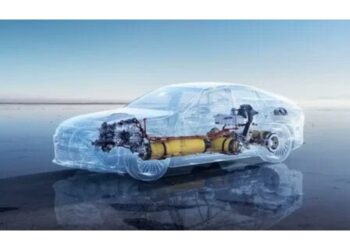The rise of self-driving technology is reshaping global mobility, creating a wave of opportunities across software, hardware, and services. Among these, the Autonomous Driving Software Market is emerging as one of the most exciting spaces for startups. With global automakers, Tier-1 suppliers, and technology firms investing heavily in artificial intelligence (AI), machine learning, cloud computing, and real-time data analytics, innovative startups are finding ways to carve out niches. The demand for advanced, safe, and scalable solutions has never been greater, and startups that bring agility, novel ideas, and cutting-edge software development approaches are gaining traction in this fast-evolving sector.
Why Startups Hold an Edge in Autonomous Driving Software
Startups are often viewed as nimble, adaptable, and willing to take risks that larger corporations shy away from. Unlike established players burdened with legacy systems, startups can adopt a fresh approach to problem-solving. In the Autonomous Driving Software Market, this means developing agile platforms, leveraging advanced coding practices, and experimenting with disruptive business models.
Moreover, startups often excel at forging collaborations with research institutions, universities, and government-funded innovation hubs. This allows them to access the latest developments in deep learning, neural networks, and sensor technologies. For automakers and technology giants, partnering with startups brings an infusion of fresh perspectives and specialized expertise.
AI, Deep Learning, and the Road to Full Autonomy
Artificial intelligence lies at the core of autonomous driving. Startups focusing on AI-driven perception and decision-making modules are finding strong demand. Deep learning models are particularly vital for lane detection, pedestrian recognition, and adaptive cruise control.
Startups can innovate in areas such as training AI models with synthetic data, using simulation environments to accelerate development, or creating lightweight algorithms that run efficiently on low-power processors. With the shift toward Level 3 and Level 4 autonomy, the reliance on AI and machine learning is expected to multiply, offering startups ample opportunity to scale their technologies into production-ready solutions.
Safety, Cybersecurity, and Compliance Solutions
One of the biggest barriers to the adoption of autonomous vehicles is ensuring safety and regulatory compliance. Cybersecurity threats are a rising concern as vehicles become connected to cloud ecosystems and external data sources. Startups developing software to safeguard vehicle-to-everything (V2X) communications, detect anomalies, and protect against cyberattacks are likely to witness high demand.
In addition, compliance with government regulations and functional safety standards such as ISO 26262 requires sophisticated software testing, validation, and verification tools. Startups that can provide robust safety monitoring frameworks, or software that accelerates regulatory approval processes, will find receptive markets among automakers and regulators alike.
Simulation Platforms: Accelerating Time-to-Market
Testing autonomous driving algorithms on real-world roads is time-consuming, costly, and potentially unsafe. This has given rise to demand for advanced simulation platforms that replicate real-world driving conditions at scale.
Startups that can design simulation environments—integrating weather conditions, traffic patterns, and unpredictable driver behaviors—are positioned to play a critical role. By offering simulation-as-a-service models, startups can make such platforms accessible even to mid-sized automotive companies. These solutions not only reduce costs but also help accelerate the validation of autonomous systems, thereby shortening the time-to-market.
Opportunities in Data Annotation and Edge Computing
High-quality data is the lifeblood of autonomous driving software. However, annotating millions of images, video clips, and LiDAR scans remains a labor-intensive task. Startups offering AI-powered data annotation platforms can significantly improve efficiency in training autonomous systems.
Edge computing presents another high-potential avenue. With vehicles generating terabytes of data daily, relying solely on cloud processing introduces latency and bandwidth issues. Startups working on edge AI software—where decisions are made closer to the data source—can ensure faster, more reliable performance of critical systems like collision avoidance and emergency braking.
Partnerships with Automakers and Tier-1 Suppliers
The most effective way for startups to scale their solutions is through strategic partnerships. Automakers are eager to integrate third-party innovations into their vehicles, while Tier-1 suppliers look to startups for agile software modules that complement their hardware expertise.
For example, startups providing plug-and-play perception software, automated mapping tools, or over-the-air (OTA) update systems can collaborate with automotive OEMs to bring their solutions to market. Such collaborations not only provide revenue streams but also offer startups credibility in an industry where trust and reliability are paramount.
Regional Growth Avenues for Startups
Regional markets offer diverse opportunities for software-focused startups. In North America, strong investment ecosystems and favorable government policies create fertile ground for innovation. Europe, with its stringent regulatory environment, presents opportunities for startups specializing in compliance, safety testing, and cybersecurity. Meanwhile, Asia-Pacific, led by China, Japan, and South Korea, is becoming a hub for autonomous driving pilots and large-scale deployment.
Startups can tailor their solutions to meet regional priorities, whether it is addressing regulatory hurdles in Europe, urban mobility challenges in Asia, or long-haul freight automation in the U.S. This regional diversification can help startups expand beyond domestic boundaries and secure global contracts.
Funding, M&A, and the Startup Ecosystem
The investment landscape for autonomous driving technology has grown robust in recent years. Venture capital firms, corporate investors, and even governments are channeling funds into startups addressing gaps in the software ecosystem. Many automakers are acquiring or investing in startups to gain a technological edge.
This dynamic presents startups with dual opportunities: either scale independently with investor support or position themselves for acquisition by larger industry players. Both pathways can provide startups with the resources needed to accelerate their growth while contributing to the broader expansion of the Autonomous Driving Software Market.
The Fairfield Market Research Perspective
According to Fairfield Market Research, the evolution of autonomous driving is not merely a technological trend but a structural shift in mobility. The firm highlights that startups with scalable business models, intellectual property strength, and collaborative frameworks are poised to become indispensable players in the automotive software ecosystem.
By focusing on niche areas like AI perception, simulation testing, cybersecurity, and data management, startups can align themselves with industry megatrends while addressing pressing challenges. The long-term potential is vast, and the ability to innovate quickly will remain the defining factor for success.
The Startup Advantage
The journey toward fully autonomous vehicles is complex, requiring collaboration between governments, automakers, software developers, and infrastructure providers. Startups are uniquely positioned to inject innovation, agility, and fresh thinking into this ecosystem.
By seizing opportunities in AI, cybersecurity, simulation, edge computing, and regulatory compliance, startups can transform themselves into central pillars of the self-driving revolution. For entrepreneurs willing to take the leap, the future of the Autonomous Driving Software Market promises immense potential and long-lasting impact.












